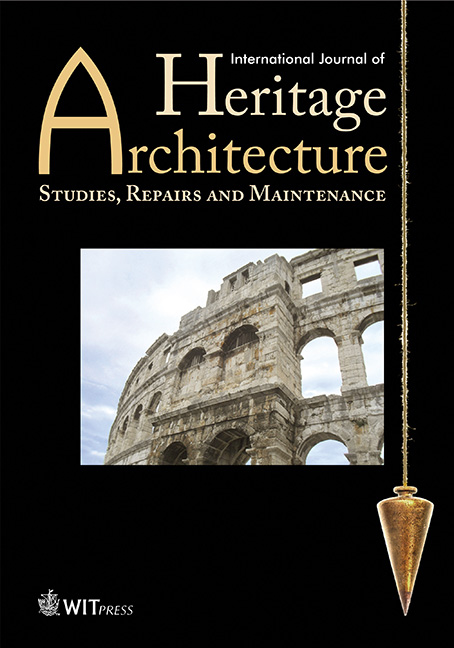Application of the hole-drilling method for measuring stress in timber structural elements subjected to compression perpendicular to the fibres
Price
Free (open access)
Volume
Volume 2 (2018), Issue 3
Pages
10
Page Range
395 - 405
Paper DOI
10.2495/HA-V2-N3-395-405
Copyright
WIT Press
Author(s)
M. Crespo de Antonio, D. Luengas-Carreño & S. Sánchez-Beitia
Abstract
The hole-drilling method should be included among semi-destructive techniques (SDTs) in the in situ structural assessment. Many useful techniques are used in heritage for material assessment to measure density, stiffness or deterioration level in different materials, but there was not a technique used strictly for the structural analysis or for measuring stresses. Hole drilling is considered an SDT because drill- ing is needed to remove a part of the material in order to relax the existing stress. The relaxed strains are inferred due to the extraction of the material by drilling a hole of 18 mm in diameter and 16 mm in depth. The damage caused by that hole is minor and it does not affect the integrity of the supporting element nor its load-bearing capacity. Traditionally, the method was based on the ASTM E837 standard, only referred to residual stress in isotropic materials. These researchers have adapted the method for this natural orthotropic material: wood. Hole drilling has been adapted for a new material, a new application and a new scale. The importance of this new application lies in the possibility of measuring the current stress status derived from structural loads and other constructive actions in an existent building. This paper focuses on the measurement of a special situation in wood: compression perpendicular to the grain. The load-bearing strength of wood is very high in the fibre direction, but it decreases significantly in the perpendicular direction, causing large deformation due to the fibres being crushed. There is a specific piece supporting compression perpendicular to the grain whose Spanish name is ‘zapata’. This structural element has been traditionally used in architecture. The tests in this paper were carried out at the laboratory, simulating the stress in ‘zapatas’ in real structures. The results obtained are the first approach to the application of the hole-drilling technique before applying it in real structures.
Keywords
ancient constructions, compliance tensor, compression perpendicular to the fibre, hole-drilling technique, on-site assessment, timber structures




